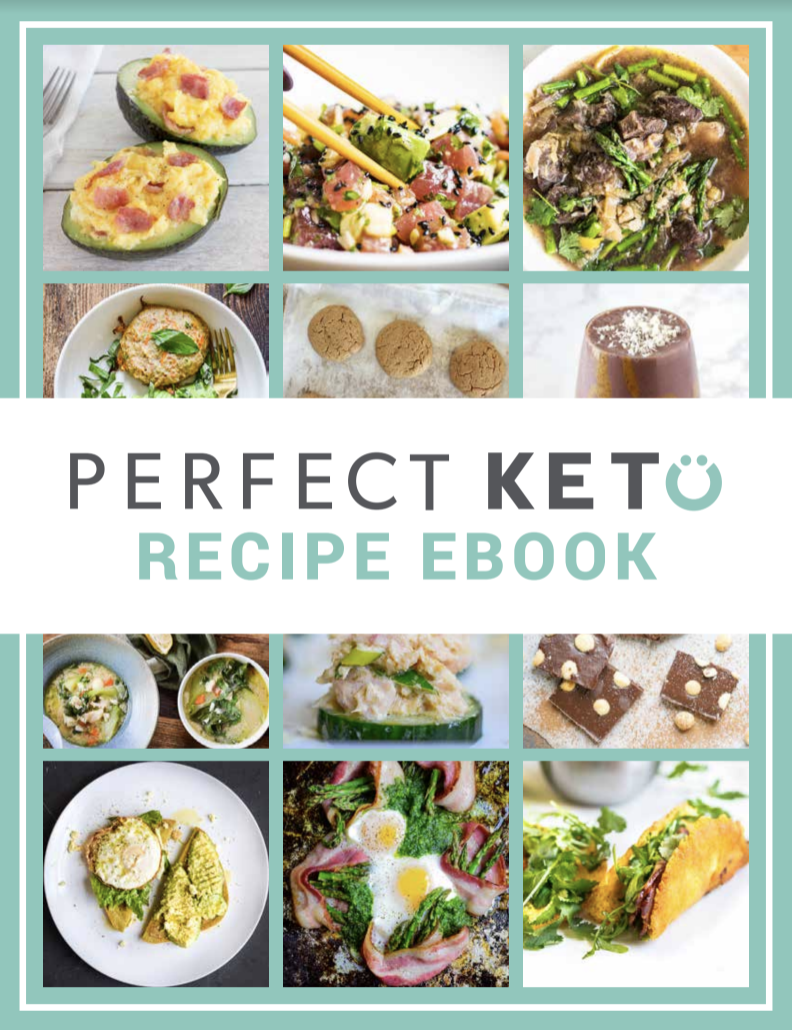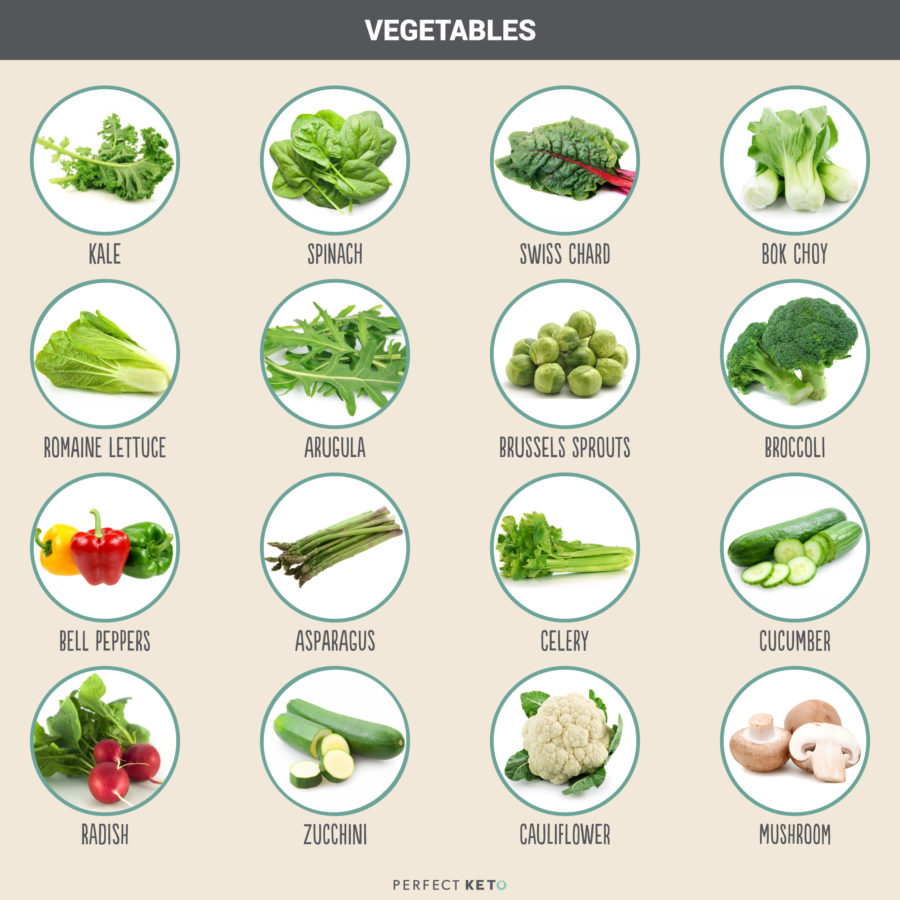A keto meal plan is your key to success on the ketogenic diet. Knowing which foods to eat (and which to avoid), meal prepping, and following a ketogenic guidelines will help you reach your macro goals and stay in ketosis.
This guide offers a sample one-week keto meal plan — perfect for your first week on keto. Feel free to follow it to the letter or tailor it to your individual goals.
Before you dive into the meals, review how to calculate your macros and which foods are keto-friendly. This will set you set you up for success after your initial week on the keto diet.
Which Version of Keto Should You Follow?
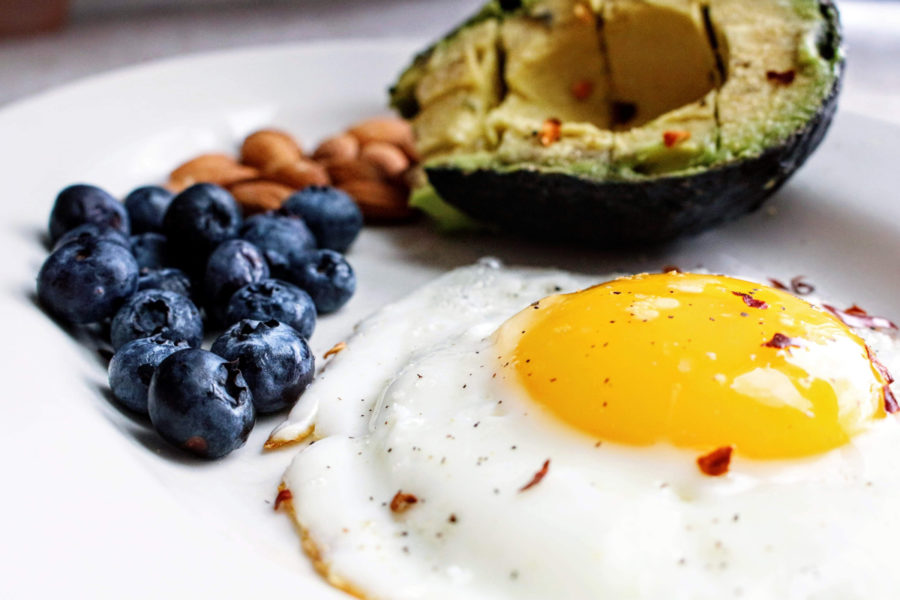
Why do you want to start a ketogenic diet and follow a keto meal plan? Do you want to finally lose the stubborn excess body weight you’ve been lugging around? Are you looking for better mental clarity and more energy? Or will you be using a ketogenic diet for more specific health benefits, such as lowering your blood sugar, blood pressure, or decreasing your risk of type 2 diabetes?
Your approach to keto will differ depending upon your individual goals. Below are a few common keto objectives, and the keto diet type best suited for accomplishing each.
For Fat Loss and Overall Health: Standard Ketogenic Diet
The standard ketogenic diet (SKD) is the most common approach to keto, and the most highly recommended method for beginners. Those who follow SKD are typically looking to achieve weight loss or fat loss. You might also be looking to improve certain symptoms related to depression and mental health, inflammation, and cholesterol levels.
The basic rules for SKD are:
- Limit your carb intake to 20-50 grams of net carbs per day
- Consume moderate amounts of protein
- Consume high amounts of fat
An intake of 30 grams of net carbohydrates or less will typically induce ketosis.
Read Next: 11 Factors That Could Be Hindering Weight Loss on Keto
For Improved Workout Performance: Targeted Ketogenic Diet
The targeted ketogenic diet (TKD) is ideal for maintaining exercise performance, and therefore best for athletes or those who maintain a high activity level. How does it work? TKD allows for glycogen resynthesis without interrupting ketosis for extended periods of time.
To follow TKD, use these guidelines:
- Consume 25-50 grams of carbs per day
- Consume highly digestible carbs 30 minutes to one hour prior to exercise
- Consume high amounts of fats and moderate amounts of protein
For Bodybuilders or Athletes: Cyclical Ketogenic Diet
The cyclical ketogenic diet (CKD) involves alternating days of strict keto and high-carb consumption. For example, a week on CKD would involve eating 20-50 grams of carbs for five consecutive days, then eating a high-carb diet (over 100 grams per day) for two days.
Athletes who follow a high-intensity, high-volume training schedule would be best suited for this approach. The goal of CKD is to completely deplete muscle glycogen between the carb loads while the TKD has a goal of maintaining muscle glycogen at a moderate level.
To follow the SKD, try this schedule:
- For five days: Consume 20-50 grams of carbs per day
- For two days: Consume over 100 grams of carbs per day
- Following your two days of “carb loading,” return to restricting carbs to 20-50 grams
For Those Who Need More Protein: High-Protein Ketogenic Diet
If you lift four times or more per week, you might require more protein in your keto meal plan. While the standard ketogenic diet typically limits protein intake to 20% of total calories, the high protein ketogenic diet (HPKD) allows 35% of total calories come from protein.
To follow HPKD, try this:
- Consume 35% of total calories from protein
- Consume 60% of total calories from fat
- Consume 5% of total calories from net carbs
Calculate Your Macronutrients
Macronutrient ratios are very important on a ketogenic diet. You’ll eat plenty of healthy fats and protein, while your total carb intake will be kept to a minimum. The macro ratios on a low-carb, high-fat diet typically look like this (for simplicity’s sake, the following percentages are based on the standard ketogenic diet approach):
- High fat: 70-80% of your calories
- Moderate protein: 20-25%
- Low carb: 5-10%
Start by using our keto macro calculator here to help you determine what and how much of each category to eat based on your specific body composition and lifestyle.
You’ll have a rough estimate of how many grams of fat, protein and carbs your meals need to cover over the course of one day.
Plan Your Meals
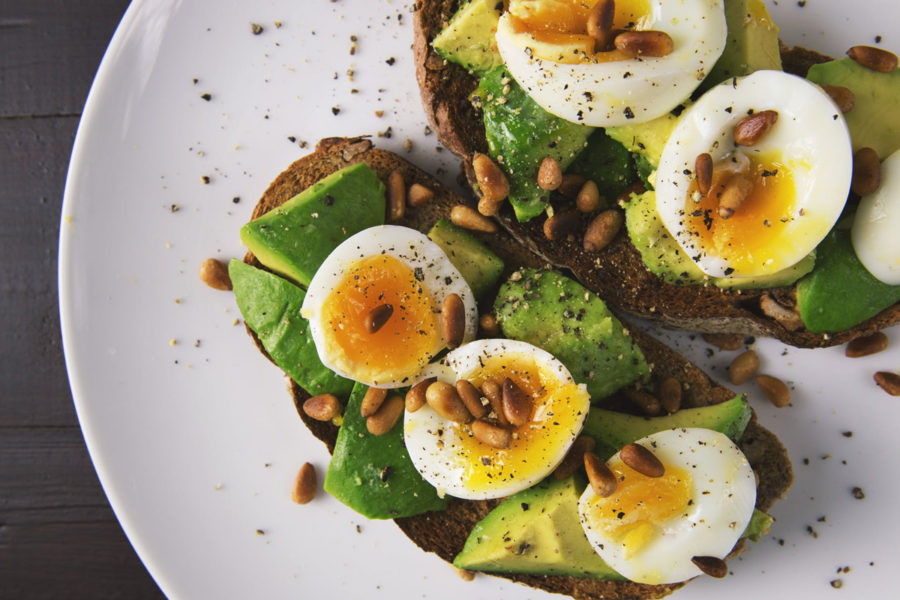
Now that you’ve calculated your macros, pick one day each week to sit down and and create your keto meal plan for the next seven days.
Your first week on the keto diet is covered below, but after that you’ll want to check the recipes on the Perfect Keto website and add them to your repertoire so you’re never bored.
All the recipes on this list include the macro breakdown so you don’t have to calculate it.
If you stumble on a recipe without a macro count, you can enter the ingredients in a diet app like KetoDietApp or MyFitnessPal to get the macros and calorie count of any meal without any complicated math equation.
If you come across other recipes you’d like to use, follow the keto diet cheat sheet at the end of this guide or use the keto diet foods list to map out your keto meal plan. Before you go grocery shopping, consider downloading the Perfect Keto grocery list.
When organizing your keto meal plan for the week, consider the following:
- How many people in your home will be eating the meals? (This will determine how many servings you need to make.)
- Do you want to make enough for leftovers the next day?
- How do you want to structure each day? Do you plan to eat breakfast every morning? Or will you fast through breakfast and only eat lunch and dinner?
Once your meals are planned out, make a shopping list with the ingredients you’ll need for each meal and head out to the store.
Start Cooking
You have your keto meals planned. You have your ingredients. Now everything comes down to the specifics.
Maybe you’ll want to prep and cook most of your meals on your day off and store them for easy grab-and-go during the week. Consider what fits your schedule and lifestyle most. That’s the easiest way to stick with it.
Making any new change can seem overwhelming, but having a plan in place will set you up for success. View recipes for breakfast, lunch and dinner, snacks and dessert on this site, or download the Perfect Keto recipes ebook.
The 7-Day Keto Meal Plan

Below, you’ll find a week of meal planning for inspiration to start your new ketogenic diet.
The example macros are set for a person who is eating 1,600 calories per day and sticking to 100 grams or less of protein, 25 grams or less of carbs, and about 125 grams of fat.
Feel free to mix and match meals from different days and adjust your daily macros according to how your body feels. In the recipes below, consume one serving unless otherwise noted.
Day 1 Meals
| Recipe | Fat | Protein | Carbs | Calories | |
| Breakfast | A Southwest omelet with bell peppers and chorizo | 28g | 17g | 3g | 426 |
| Lunch | Super Simple Chicken Cauliflower Fried Rice | 14g | 27g | 5g | 260 |
| Dinner | Superfood Meatballs and Keto Creamed Spinach | 36g | 36g | 7g | 485 |
Day 2 Meals
| Recipe | Fat | Protein | Carbs | Calories | |
| Breakfast | Chocolate Pancakes with Blueberry Butter | 50g | 27g | 11.5g | 611 |
| Lunch | Zesty Chili Lime Keto Tuna Salad | 37g | 17g | 1g | 406 |
| Dinner | Lemon Herb Low Carb Keto Meatloaf | 29g | 33g | 2g | 344 |
Day 3 Meals
| Recipe | Fat | Protein | Carbs | Calories | |
| Breakfast | Three Quick n’ Easy Keto Egg Muffins | 12g | 12.9g | 4.5g | 174 |
| Lunch | Italian Turkey Casserole | 44.5g | 28.8g | 5.5g | 568 |
| Dinner | Portobello Bun Cheeseburger with Celeriac Everything Oven Fries and Homemade Keto Mayo | 40g | 31g | 13g | 539 |
| Dessert | 1 Mocha Chip Cookie | 13g | 3g | 2g | 127 |
Day 4 Meals
| Recipe | Fat | Protein | Carbs | Calories | |
| Breakfast | Keto Avocado Egg Bowls | 27g | 10.5g | 7g | 305 |
| Lunch | Crispy Cheesy Chicken Salad | 36.5g | 55g | 8g | 575 |
| Dinner | 4 oz grilled ribeye steak, 2 tbsp grass-fed butter, and 2 cups of mixed leafy greens with 1 tbsp avocado oil | 62g | 20g | 1g | 286 |
| Dessert | MCT Fat Bomb | 8g | 1g | 2g | 81 |
Day 5 Meals
| Recipe | Fat | Protein | Carbs | Calories | |
| Breakfast | Avocado Breakfast Bowl | 40g | 25g | 3g | 500 |
| Lunch | Keto Parmesan Chicken | 25g | 34g | 5.5g | 369 |
| Dinner | Cheesy Broccoli Meatza | 24g | 32g | 7g | 375 |
| Dessert | Easy No-Churn Keto Ice Cream |
46.05g | 7.45g | 4.3g | 440 |
Day 6 Meals
| Recipe | Fat | Protein | Carbs | Calories | |
| Breakfast | Acai Almond Butter Smoothie | 20g | 15g | 6g | 345 |
| Lunch | Keto Beef Stew | 18g | 25g | 3g | 242 |
| Snack | Cucumber roll-ups with smoked salmon pate | 40g | 18g | 5g | 450 |
| Dinner | Creamy Mushroom Chicken | 27g | 24g | 3g | 334 |
| Dessert | Keto Chocolate Mousse | 14g | 17.5g | 6g | 248 |
Day 7 Meals
| Recipe | Fat | Protein | Carbs | Calories | |
| Breakfast | Keto Boosted Coffee | 31g | 1g | 0.5g | 280 |
| Lunch | Low Carb Crispy Keto “Fried” Chicken and one cup steamed broccoli | 27g | 33.5g | 6.5g | 494 |
| Dinner | Low Carb Keto Lasagna | 21g | 32g | 12g | 364 |
| Dessert | Collagen Mug Cake | 43.5g | 27g | 4g | 535 |
Ketogenic Diet Foods Cheat Sheet
Below is a quick list of the best ketogenic diet foods by category:
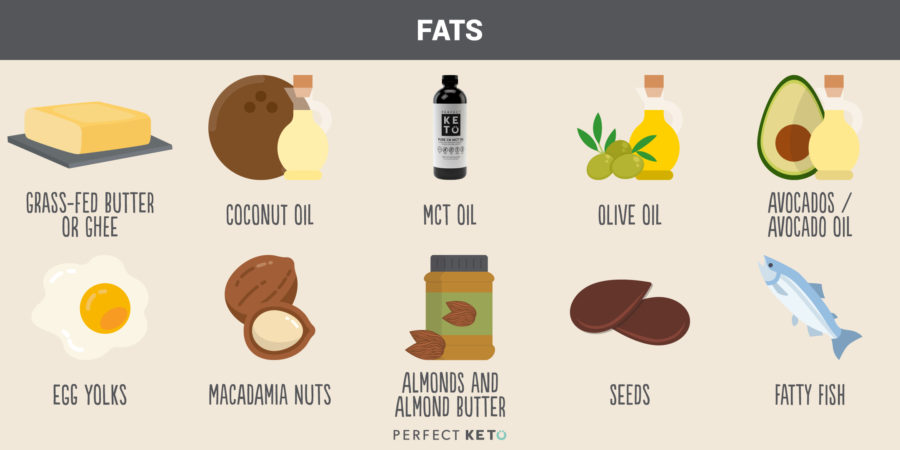
Fats
- Grass-fed dairy products like butter or ghee
- Coconut oil and MCT oil
- Olive oil
- Avocados and avocado oil
- Egg yolks
- Almonds and almond butter
- Seeds such as chia, hemp, and flaxseed
- Nuts such as pecans, macadamia nuts, and Brazil nuts
- Alternative flours made with healthy fats, including almond flour and coconut flour
- Fatty fish including mackerel, tuna, sardines, and salmon
Fats to Avoid
Avoid unhealthy fats such as seed oils and vegetable oils, which can become rancid when heated. Unhealthy fats and oils to avoid on keto include canola oil, soybean oil, corn oil, and grapeseed oil. You should also avoid reduced-fat or grain-fed dairy products as they can have added carbs and sugar.
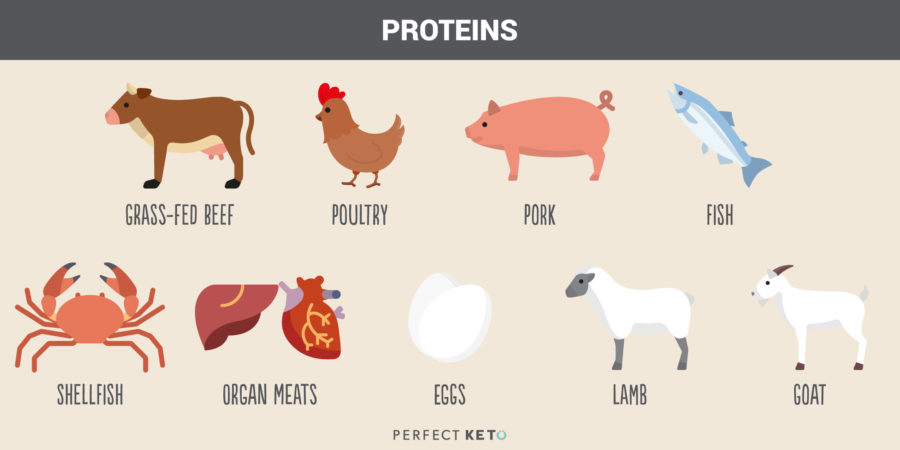
Proteins
- Grass-fed beef: Choose fattier cuts like steak, veal, roast, ground beef, and stew meat
- Poultry: Chicken breasts, quail, duck and turkey; focus on the darker, fattier sections
- Pork: Pork loin, tenderloin, pork chops, ham, bacon, and ground
- Fish: Halibut, cod, catfish, and mahi-mahi
- Shellfish: Oysters, clams, crab, mussels, shrimp, and lobster
- Organ meats: Heart, liver, tongue, kidney, and offal
- Eggs: Scrambled, omelets, over-easy, take your pick — just use the whole egg
- Lamb and goat
Proteins to Avoid
Stay away from processed meat (salami, hot dogs, and charcuterie) that contain suspect ingredients, sauces, or added sugars. These can unknowingly increase your carb and sugar intake and derail your efforts. Always purchase the highest-quality meat you can reasonably afford.
Vegetables
Consume low-glycemic, low-carb, non-starchy vegetables including:
- Leafy greens: Kale, spinach, Swiss chard, arugula, bok choy, broccoli, and romaine lettuce
- Other low-carb vegetables: Brussels sprouts, bell peppers, asparagus, celery, cucumber, radish, zucchini, cauliflower, and mushrooms
Vegetables to Avoid
Avoid high-carb and starchy vegetables, also known as tubers. These are typically root vegetables grown underground, such as carrots, white potatoes, sweet potatoes, and parsnips.
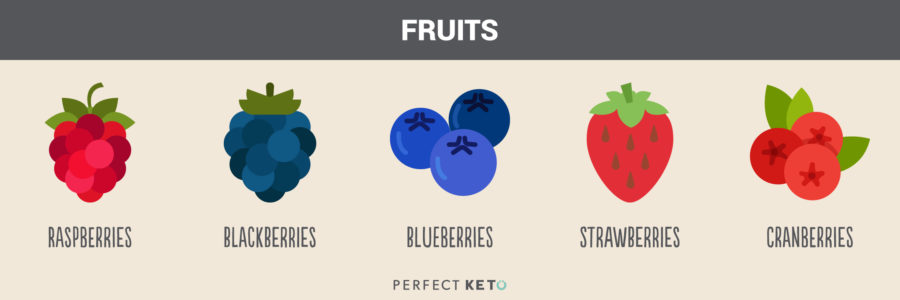
Fruits
Limit the number of fruits you eat as they have sugar. Fruits can be consumed either fresh or frozen. When you do eat fruit, choose lower-sugar options including:
- Avocados: This is the one fruit that can be consumed in abundance
- Berries: Raspberries, blackberries, blueberries, strawberries, and cranberries
Fruits to Avoid
Most fruits, unless listed above, should be completely eliminated due to the high quantities of sugar and carbohydrates. Apples, pineapple, watermelon, mango, oranges, and most other fruits should be avoided. Dried fruits and fruit juice are also not permitted on keto.
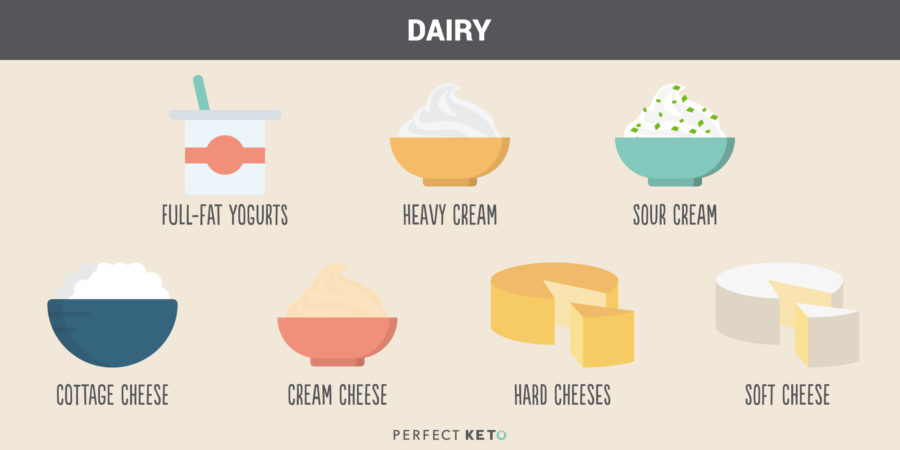
Dairy
Most dairy products get the green light on a keto diet plan, on a few conditions. Opt for the full-fat dairy products (low-fat versions remove fat and add sugar) and preferably organic and raw, if possible.
- Full-fat yogurts
- Heavy cream
- Sour cream
- Cottage cheese
- Cream cheese
- Hard cheeses like parmesan, blue cheese, Swiss, feta, and cheddar cheese
- Soft cheese like brie, Monterey Jack, mozzarella, and blue cheese
Condiments, Spices, and Sweeteners
When it comes to toppings on the keto diet, homemade is always best. That way you can control the sugar count.
Since life is hectic, here are some sugar-free condiments you can purchase in stores or on Amazon.
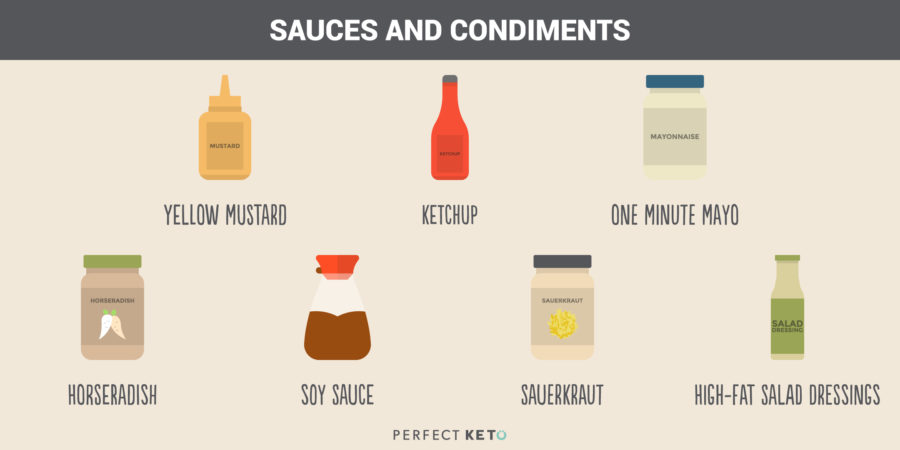
Sauces and Condiments
- Yellow mustard
- Ketchup without added sugars (or sugar alcohols)
- One-minute mayo
- Horseradish
- Soy sauce
- Sauerkraut without added sugars
- High-fat salad dressings with low or no added sugars
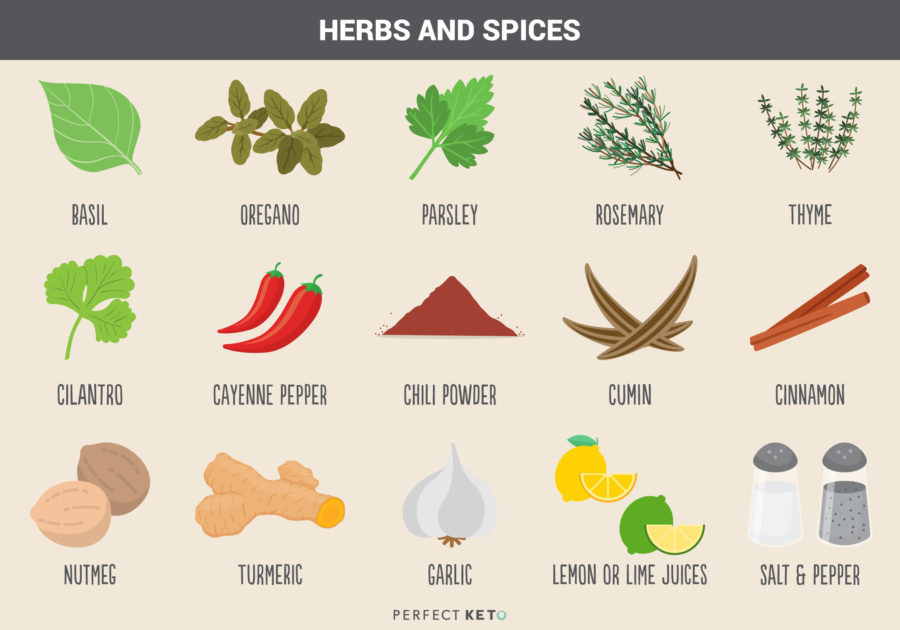
Herbs and Spices
You’ll need to toss most of your prepared spice mixes as many contain sugar or carbs as fillers. As long as you stick to dried herbs and spices only, you should be in safe.
A few examples include:
- Basil, oregano, parsley, rosemary, thyme
- Cilantro, cayenne, chili powder, cumin
- Cinnamon and nutmeg
- Garlic and turmeric
- Lemon or lime juice
- Salt and pepper
Sweeteners
Sweeteners can be tricky on keto, but they do exist. Stick to low-glycemic sweeteners that won’t affect your blood sugar levels, and avoid sugar alcohols. These include maltitol, dextrose, and maltodextrin.
The safest, low-glycemic sweetener options on keto include:
- Stevia: Preferably in liquid form as the powder can sometimes have dextrose or maltodextrin as a binding agent.
- Erythritol: This is not digested by the body and doesn’t have any carbs or glycemic load when digested.
- Monk fruit: Extracts from this fruit are 300 to 400 times sweeter than cane sugar, but it doesn’t have any effect on your blood sugar.
These are the basics of your keto meal plan grocery list. If you want to take your fat burning to the next level, you’ll need to get on board the supplement train.
Supplements for the Keto Meal Plan
Supplements can help you get into ketosis and help you reach your goals on your keto meal plan. However, it’s important to use only safe, keto-friendly supplements.
Exogenous Ketones
The purpose of exogenous ketone supplements is to provide your body with extra ketones (energy). Ketone supplements can be a huge help when you’re transitioning into a state of ketosis or entering a fasted state.
Exogenous ketones help you get back into ketosis at any time, instead of having to wait a couple of days. You can take them between meals for a quick punch of ketones or before a workout.
MCT Oil and Powders
MCT is short for medium-chain triglyceride. MCTs are precursors to ketones and help your body burn fat instead of burning carbs. They’re beneficial for weight loss, energy, and digestion because they can be readily used for energy by your body and don’t have to be shuttled around your digestive system first.
You can try MCT oil powder, liquid C8 MCT oil, and even MCT oil capsules to see what you like most.
Read Next: Using MCT Oil for Weight Loss
Collagen Protein
There are over 10,000 types of proteins in your body, yet collagen is the most abundant one. Accounting for 25-35% of all your body’s protein, it’s considered the glue holding your body together.
While most other animal-based protein powders contain casein and whey, which can be inflammatory and hard to digest for some people, collagen protein from grass-fed beef is made low and slow to preserve the nutrition.
For more info on collagen, check out the guide on When and How to Use Keto Collagen Protein.
Micronutrient Supplements
Since you have to cut out several starchy fruits and veggies when you’re on keto, you miss out on certain vitamins, antioxidants, and nutrients.
Keto Micro Greens is the solution to getting enough nutrition from produce while staying in ketosis. Learn more on how to supplement with greens powder.
Keto Micro Greens contains:
- A greens and veggie blend of raw, organic greens and vegetables from 12 different sources.
- A berry and fruit blend of raw, organic berries and fruits from 10 different sources.
- MCT powder, which is made from coconut oil. MCTs help you absorb the vitamins, minerals, and nutrients from the greens and fruits and give you a boost of energy.
- Liver support and digestive enzymes to help you get the most out of this micronutrient blend.
Now You’re Ready to Start a Keto Meal Plan
Whatever your reasons for wanting to start a low-carb diet, you’re more than prepared to crush your new keto life with today’s guide in your back pocket.
Once you figure out your macros, it’s all about finding low-carb foods you like to meet your goals. Use this keto meal plan to get started and then use the cheat list of approved keto foods to create your own winning meal plan.
Toss in a few supplements to boost your health and your body’s fat-burning potential and you’ll be well on your way to feeling and looking better.
